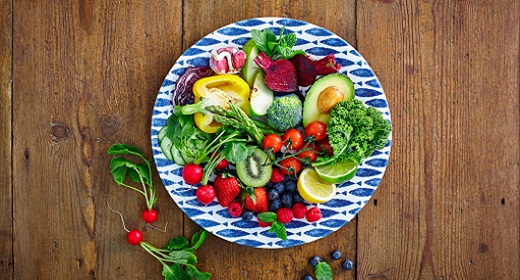by Ocean Robbins: One Wednesday afternoon, about two million years ago, Ug accidentally dropped a wild carrot into the campfire, retrieved a softer, sweeter root, and proclaimed the virtues of cooking to all who would listen…
Or at least, that’s how I imagine it might have gone.
According to some anthropologists, cooking with fire allowed humans to go from subsistence animals to, for better or worse, the dominant species on the planet. They argue that cooking made nutrients more bioavailable, allowing us to spend less time gathering and chewing on fibrous roots and bark. They even assert that our physiology evolved to take advantage of cooked food. Since it was essentially “pre-digested” by fire, our intestines could shrink. And we could devote more energy to brain function rather than turning food into cells and energy.
“Raw foodists,” on the other hand, insist that we haven’t evolved that much. They claim that cooking strips food of nutrients and enzymes, weakens our jaw muscles through disuse, and is altogether unnatural. You may have seen articles and videos by those who eat only raw food asserting that their great health and abundant energy are due to their pure and natural diet. And it’s hard to argue with raw food advocates like Mimi Kirk, who has been eating and promoting raw foods recipes for 11 years and looks decades younger than her 82 years.
Raw vs. Cooked Food
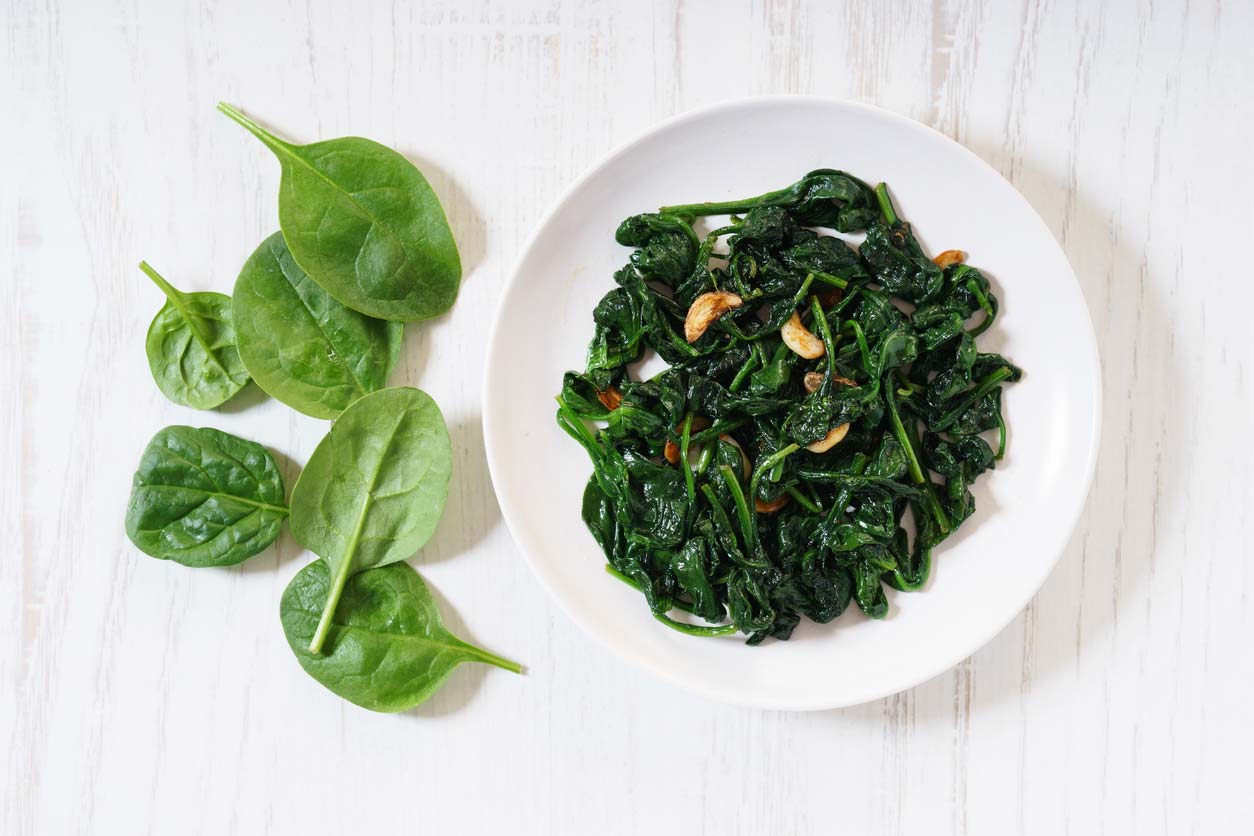
But as with many other polarizing debates, the truth is likely somewhere in the middle. Some foods deliver more nutrients when raw, others after being cooked.
Cooking can destroy or reduce the concentrations of some of the beneficial phytochemicals. Water-soluble vitamins like C and B-vitamins, in particular, can leach out during the cooking process. One study showed that the amount of vitamin C declined by an average of 55% in cooked vs. raw vegetables. The vitamin C content of broccoli plummeted to one-fifth of its original level after cooking.
So score one for team raw.
But not to be outdone, cooked veggies give your body more of the antioxidants lutein (which is good for your eyes) and lycopene (which helps protect your heart and your bones). Heating releases bound calcium, making more of the mineral available for your body to absorb. And the difference can be significant. Cooked spinach has 245 mg/cup of bioavailable calcium, while raw spinach only has 30 mg/cup!
So who wins? Everybody!
There are great advantages to both raw and cooked. And the optimal ratio varies from person to person. A lot of people in the modern world, however, eat most of their foods cooked. Adding more raw foods to your diet can add more balance and variety, and help you to get more of those nutrients that are best delivered in their raw state.
Adding more raw foods to your diet can add more balance and variety, and help you to get more of those nutrients that are best delivered in their raw state.
Raw Foods May Support Healthy Weight Loss
Raw foods tend to be high in two nutrients that are significantly associated with healthy weight loss: fiber and water. High-fiber diets have been shown to aid in weight loss, especially in obese or overweight individuals. Both fiber and water “bulk up” the foods they contain, meaning they increase the volume and weight without adding calories. Since one of the main mechanisms of satiety is the stomach’s stretch receptors, you’ll feel full from fewer calories if they contain both fiber and water.
Additionally, raw foods typically require more chewing. You won’t lose weight because of all the mouth calories you’re burning, but rather because all that chewing can slow down consumption and reduce your total food intake.
Raw Foods May be Good for Your Mood Too
And raw veggies may be as good for your mood as they are for your waistline. A 2018 study found that the higher the fresh fruit and vegetable intake (charmingly abbreviated FVI), the better the person’s mental health — and the more positive their mood. The same correlation wasn’t found for canned, cooked, and otherwise processed fruits and veggies. According to the researchers, the raw foods most highly related to better mental health were “…carrots, bananas, apples, dark leafy greens like spinach, grapefruit, lettuce, citrus fruits, fresh berries, cucumber, and kiwifruit.”
And aside from the health benefits of eating more raw fruits and veggies, sometimes you might not feel like cooking, but still want to whip up a healthy and edible meal. A pint of raw blueberries will be a lot healthier, and leave you a lot happier than a couple of blueberry Pop-Tarts — and take even less time to prepare.
What are Raw Foods?
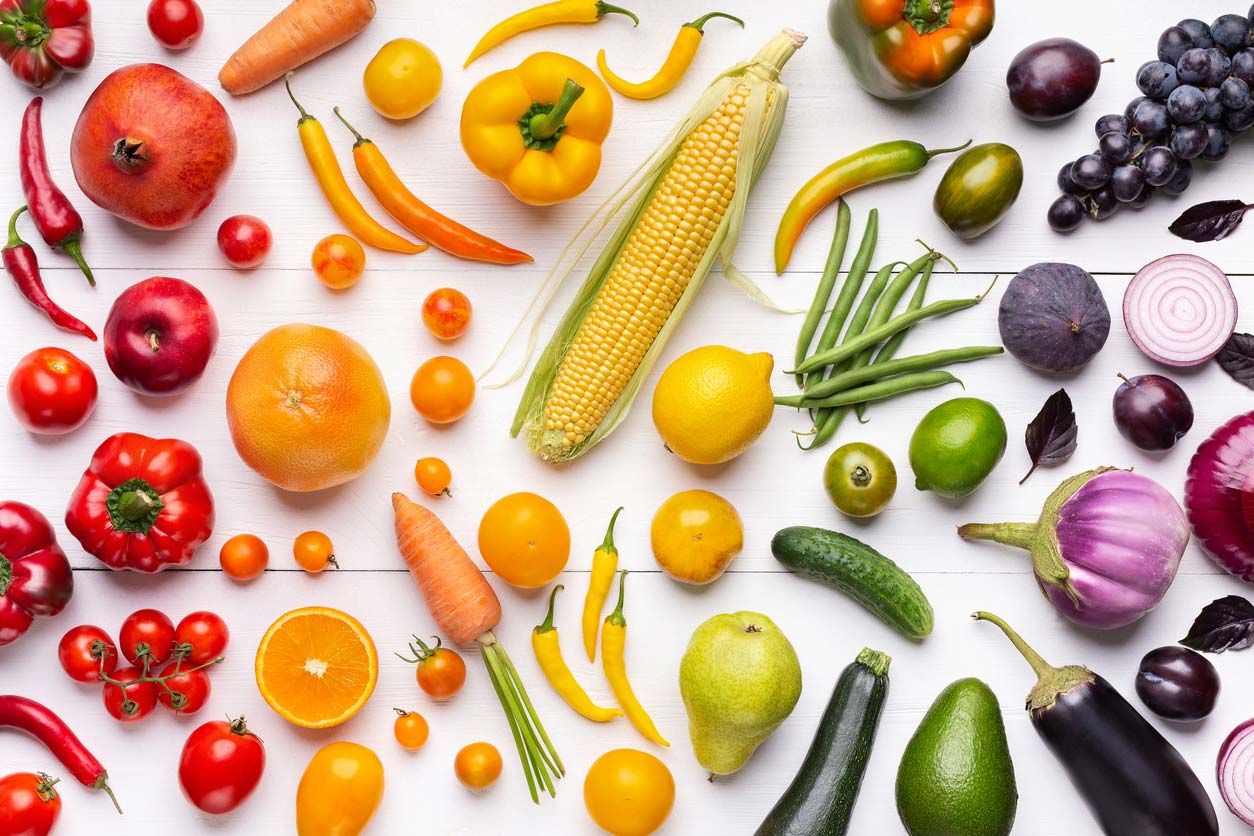
Technically, raw foods are those that haven’t been cooked. But functionally, the term “raw” also refers to foods that are unprocessed, unrefined, unpasteurized, and have not been heated to the point of losing any of their nutrients. So no microwaving, baking, frying, sauteing, air frying, pressure cooking, steaming, boiling, or grilling is involved.
If you aren’t familiar with what’s possible, you might assume that a raw meal would be restrictive and boring. After all, just think of all the dishes that are left out! But raw food meals can be far more elaborate than a head of romaine lettuce. (Not that there’s anything wrong with eating a head of romaine!) Given a little creativity, you can revel in a wide variety of complex, flavorful no-cook meals.
Some of the ingredients that you can use in raw food recipes include:
- Leafy greens
- Vegetables
- Fruit
- Sprouts and microgreens
- Nuts
- Seeds
- Nut and seed butters
- Sprouted grains and legumes
- Dried fruit
- Homemade nut milk
- Fermented foods
- Seaweed
What Foods Shouldn’t You Eat Raw?
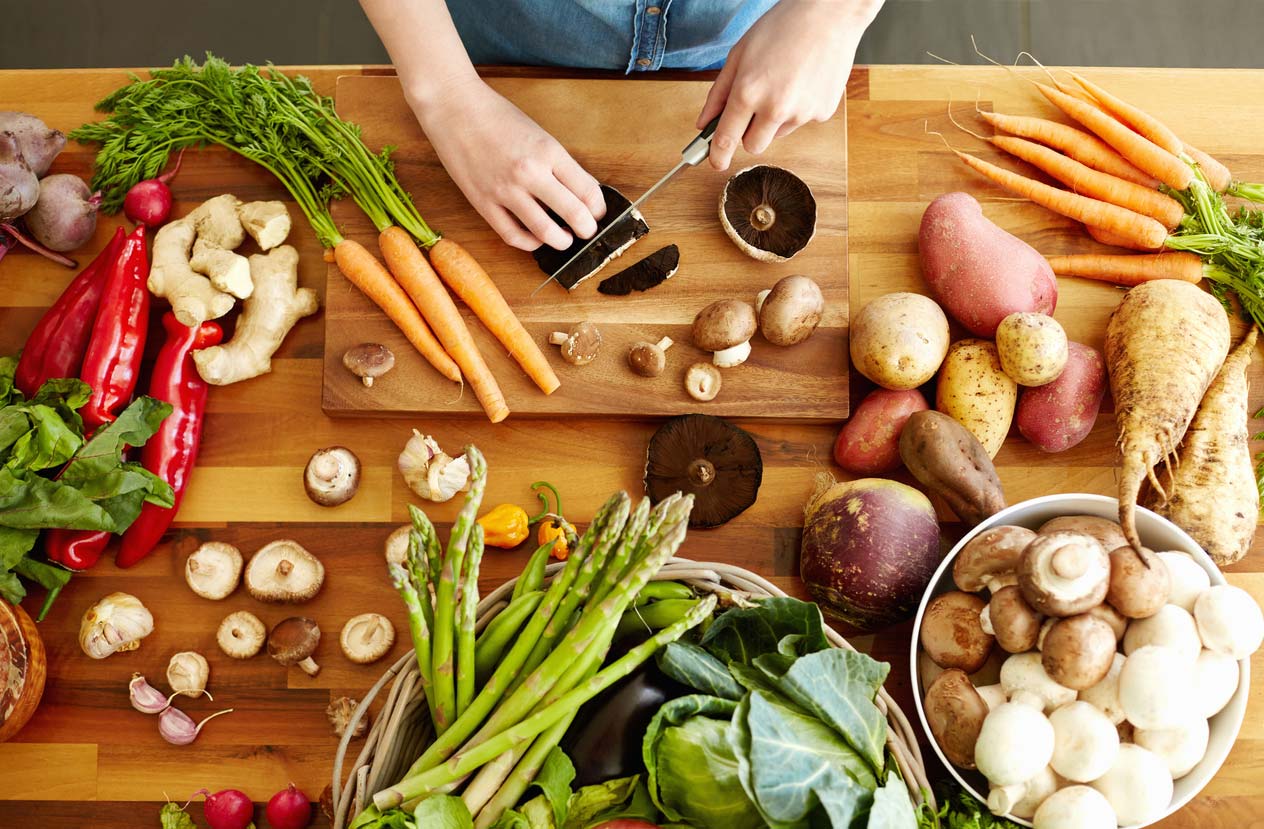
There are some plant-based foods that you probably (or in some cases, definitely) should not eat raw.
Mushrooms
Mushrooms, especially portobellos, contain high concentrations of a substance called agaritine, which has been shown to cause cancer in mice. While that doesn’t necessarily predict cancer in humans, going easy on raw mushrooms might be a reasonable decision. Fortunately, cooking and even storing them in the refrigerator for a couple of days can significantly break down agaritine. In addition, some people can develop a nasty rash, called flagellate dermatitis, after eating raw or undercooked shiitake mushrooms. If you need more incentive to cook your shiitakes, let me just share a description of the rash from a dermatology website: “It is characterized by pruritic, erythematous, linear streaks that resemble whiplash marks.” I’ll take mine steamed or sauteed, thank you very much!
Kidney Beans
Another plant food to avoid eating raw is the innocuous-looking kidney bean. Raw or undercooked red kidney beans, and to a lesser extent white kidney and broad beans, are toxic until fully cooked. Apparently, one of the culprits is a lectin called phytohaemagglutinin, which I’m guessing has never been played in a game of Scrabble. You’ll know you’ve gotten kidney bean poisoning because, within three hours of consuming an undercooked or raw bean, you’ll feel extreme nausea, which will quickly be followed by severe vomiting. Next comes the diarrhea and abdominal pains. Are you with me? Stay away from raw kidney beans.
Contaminated Food
Some plant foods should be cooked not because they’re problematic in and of themselves, but because of how they’ve been grown and harvested. There have been several recent outbreaks of food poisoning linked to raw spinach and other greens fertilized with manure that hadn’t been properly aged and still contained live pathogens. Tomatoes have also been a source of salmonella poisoning, becoming contaminated either by the water from sprinklers in the fields, or water used to wash them during processing.
Tempeh
Tempeh, a favorite plant-based food made of fermented soybeans, can be a growth medium for microorganisms other than the ones used to culture the tempeh itself. It should be cooked at a high enough temperature, and for long enough, to make it safe for human consumption.
Potatoes
You should also cook your potatoes to avoid glycoalkaloids like solanine and chaconine, which are toxic to humans in large quantities. Potatoes are especially toxic when they turn green, so make sure to cut away any green areas or where eyes have formed.
Ways to Prepare Raw Food Recipes & No-Cook Meals
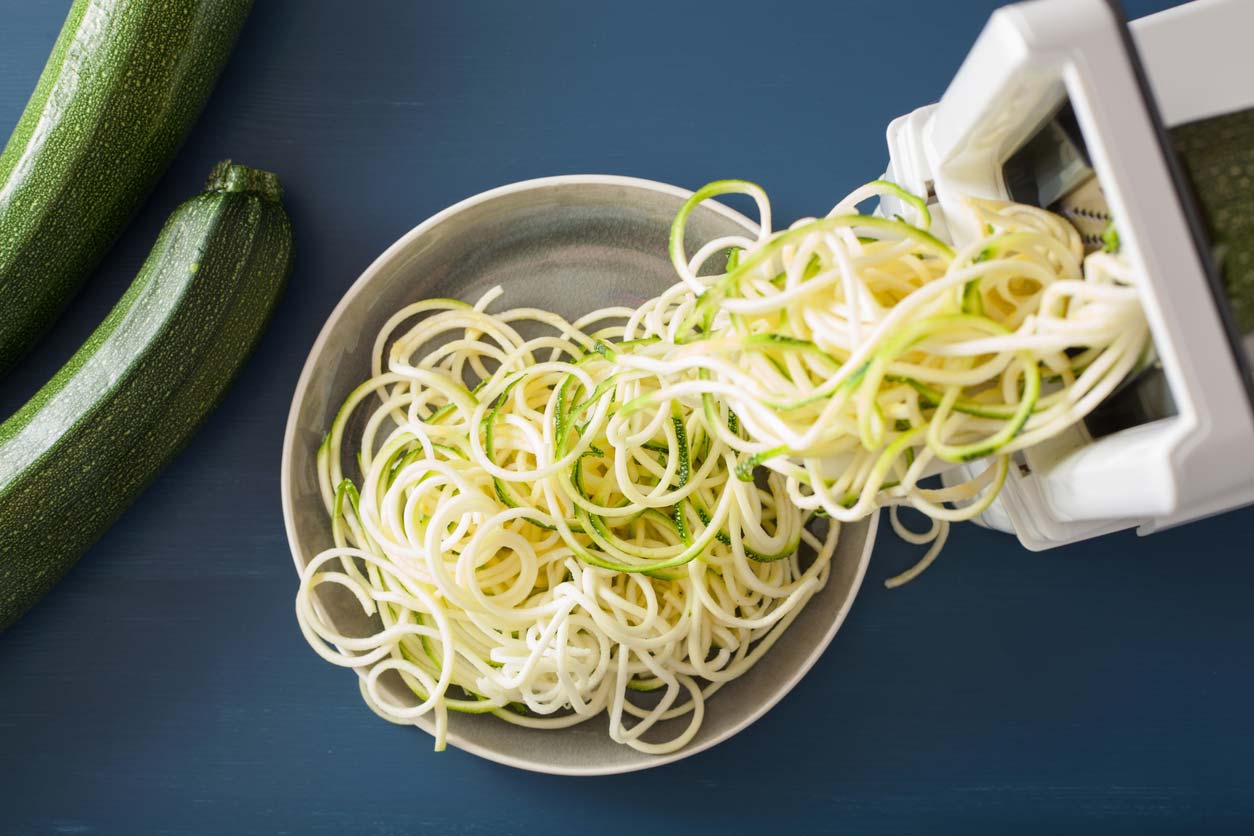
Raw food doesn’t have to mean straight out of the ground. While a bowl of grapes or crudite platter can be a perfectly wonderful raw dish, there are many techniques available to the raw chef to create complex and delicious dishes beyond chopping and plating. Some grains can be soaked in water to render them palatable even without cooking. One well-known example is overnight oats, and another is soaked bulgur wheat in a raw tabbouleh salad.
You can also sprout grains, seeds, and some beans. (For our article about sprouts and how to grow them, click here.) Once sprouted, you can then blend or pulverize the grains, seeds, or beans in a blender or food processor to make dips, pates, and spreads. If you love hummus, you can sprout chickpeas for two to three days and then process the still-crunchy-but-they-won’t-break-your-teeth beans with raw garlic, lemon juice, some salt (if you aren’t going low-sodium), and tahini.
You can make raw foods more palatable by marinating or fermenting them too. The longer they soak, the more flavor they’ll absorb. Fermentation actually changes the chemical structure of the food, making it more digestible.
Two more techniques that raw chefs love are spiralizing and dehydrating. Spiralizing is the process of turning veggies and roots into long strands that mimic pasta. Zucchini, sweet potatoes (which, unlike regular potatoes, are okay to eat raw), carrots, and beets are popular choices. And dehydrating, usually with the aid of a dedicated dehydrator, or set in the oven for a long time at the lowest setting, can turn soaked and blended nuts, seeds, and beans into chewy “breads” and crunchy crackers.
Some common raw meals include the following:
- Sandwiches & wraps (If you want the dish to be 100% raw, you can use leafy greens, raw nori, or raw coconut or jicama wraps instead of baked tortillas)
- Salads
- Bowls
- Zoodles and other spiralized veggie dishes
- Lettuce cups or tacos
- Smoothies
- Raw dips
- Chilled soups
- Overnight oats or chia seed pudding
Raw Food Kitchen Tools
There are several kitchen appliances that can help you attain great culinary heights even without the application of heat.
The spiralizer I like is actually quite inexpensive, costing less than $30. And the manufacturer shares mouthwatering photos of mounds of spiralized green cabbage, sweet potato, carrot, zucchini, and red onion.
Pretty much any blender will work for cooked food, but raw foods are often tougher to get creamy and smooth. Here’s a relatively inexpensive blender that can handle most raw tasks. For serious raw work, check out a machine in the Vitamix line.
Here are a couple of popular food processors: the inexpensive KitchenAid (a smaller 5-cup model), and the more expensive Ninja Professional Plus Kitchen System, which is a blender and food processor all-in-one.
You can also make your own raw, dairy-free nut milks using a dedicated nut milk maker. Or you can do the DIY route using mesh bags or cheesecloth. If you are currently buying lots of commercial plant milks, even the pricey Almond Cow machine will pay for itself in a few months.
Finally, if you want to include raw chewiness and crunchiness in your diet, or if you just like to preserve fruit or make flax crackers, here’s a great dehydrator with nine racks and stainless steel shelves.
7 Super-Nutritious Raw Food Recipes
If you’re a raw food enthusiast, you might know and already love some of the raw food techniques mentioned. But if you’re newer to raw foods, we encourage you to try a few dishes to see how raw food recipes can be easy, fun, and delicious!
1. Simple Cucumber, Asparagus, and Radish Salad
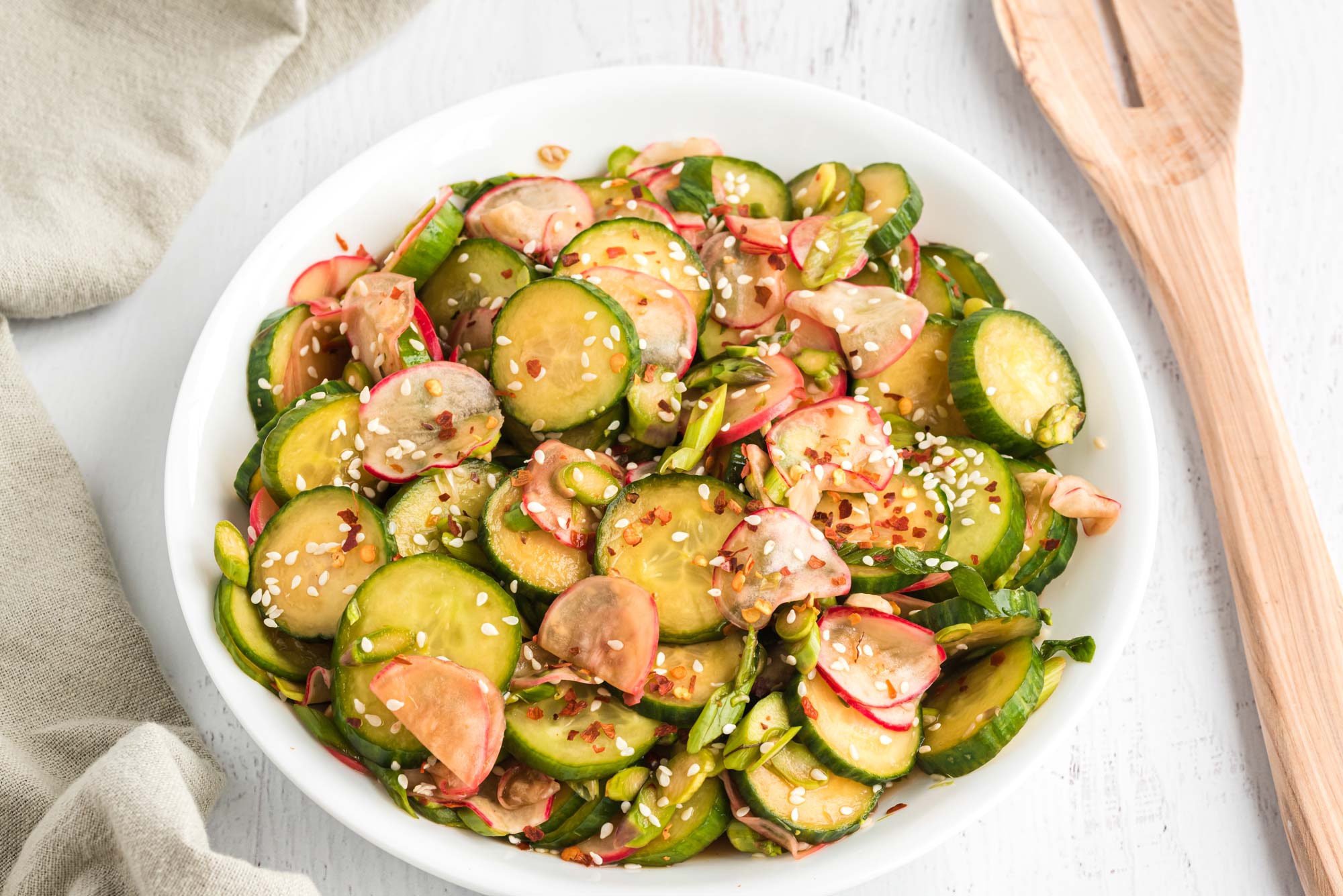
It’s pretty neat how you can put a handful of flavorful plant-based ingredients together, let them sit overnight, and have a dish that’s bursting with flavor the next day. That’s the essence of marinating! What’s really cool is that you can add just about any vegetables you have on hand or that are growing in your garden — as well as change up the flavor by adding a variety of herbs and spices. Enjoy this crunchy treat as a snack or as part of a meal.
2. Sprouted Mediterranean Crunch Avocado Bowl
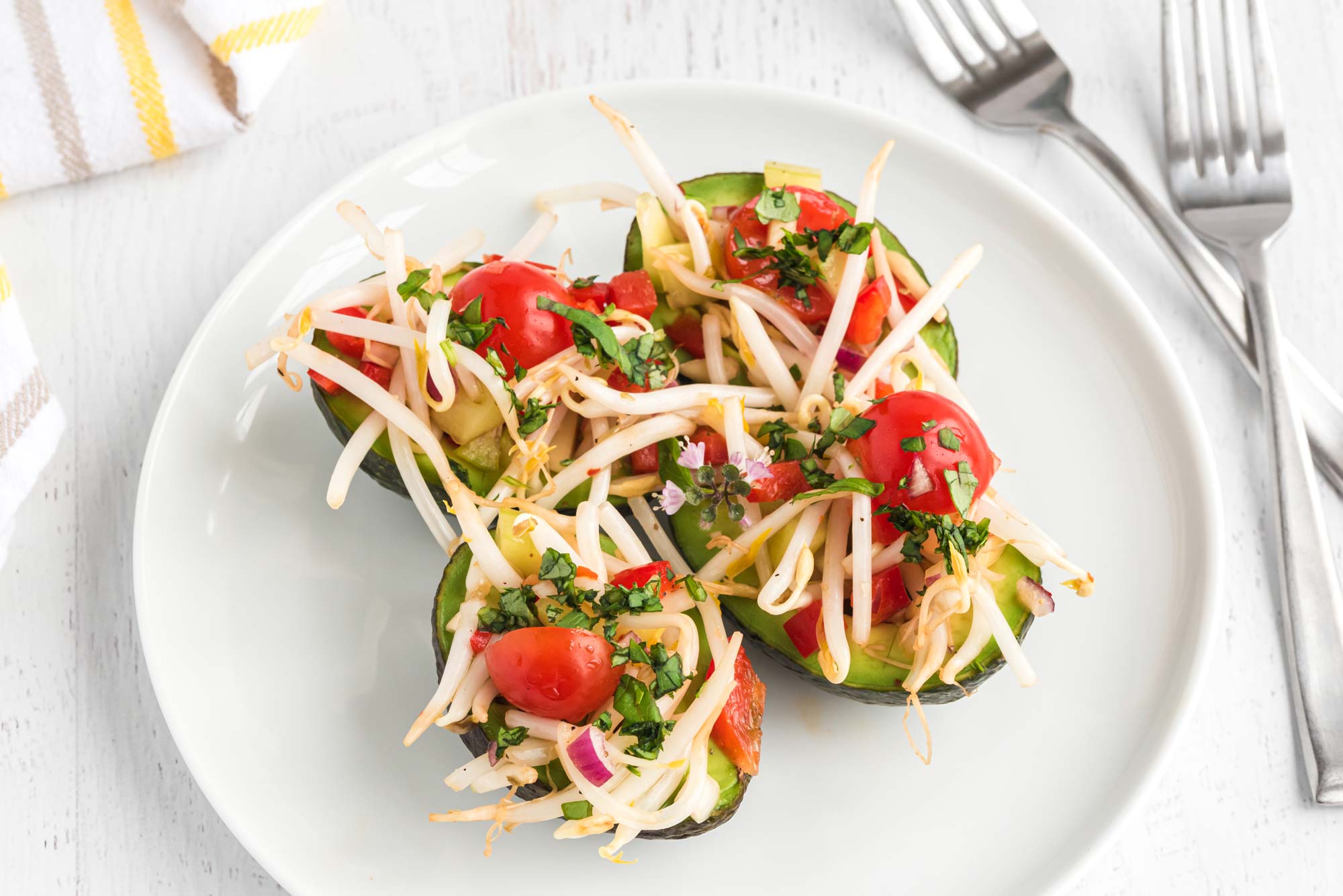
If you love a variety of textures in your meals for that oh-so-satisfying creamy and crunchy mouthfeel, then you’re going to love this simple dish with avocado, sprouts, and nuts. It also checks all the boxes for flavor — umami olives and tomatoes, sweet and acidic fresh orange juice, a bit of salty tamari (and olives!), and deliciously earthy sprouts. Did we mention nutrition? With the sprouts, tomatoes, red onion, avocado, and… well, pretty much everything, you’ve got an abundance of nutrients!
3. Spiralized Zucchini with Raw Marinara Sauce

If you’ve ever made marinara sauce, you may know that the sauce needs to cook slowly for hours to really let the flavors develop into what makes it a thick and savory sauce. But this raw sauce defies everything you’ve learned about making traditional marinara. Juicy ripe tomatoes blended with fresh fragrant garlic, sweet red peppers, and savory herbs bring new life to marinara and your health.
4. Living Caesar Dressing
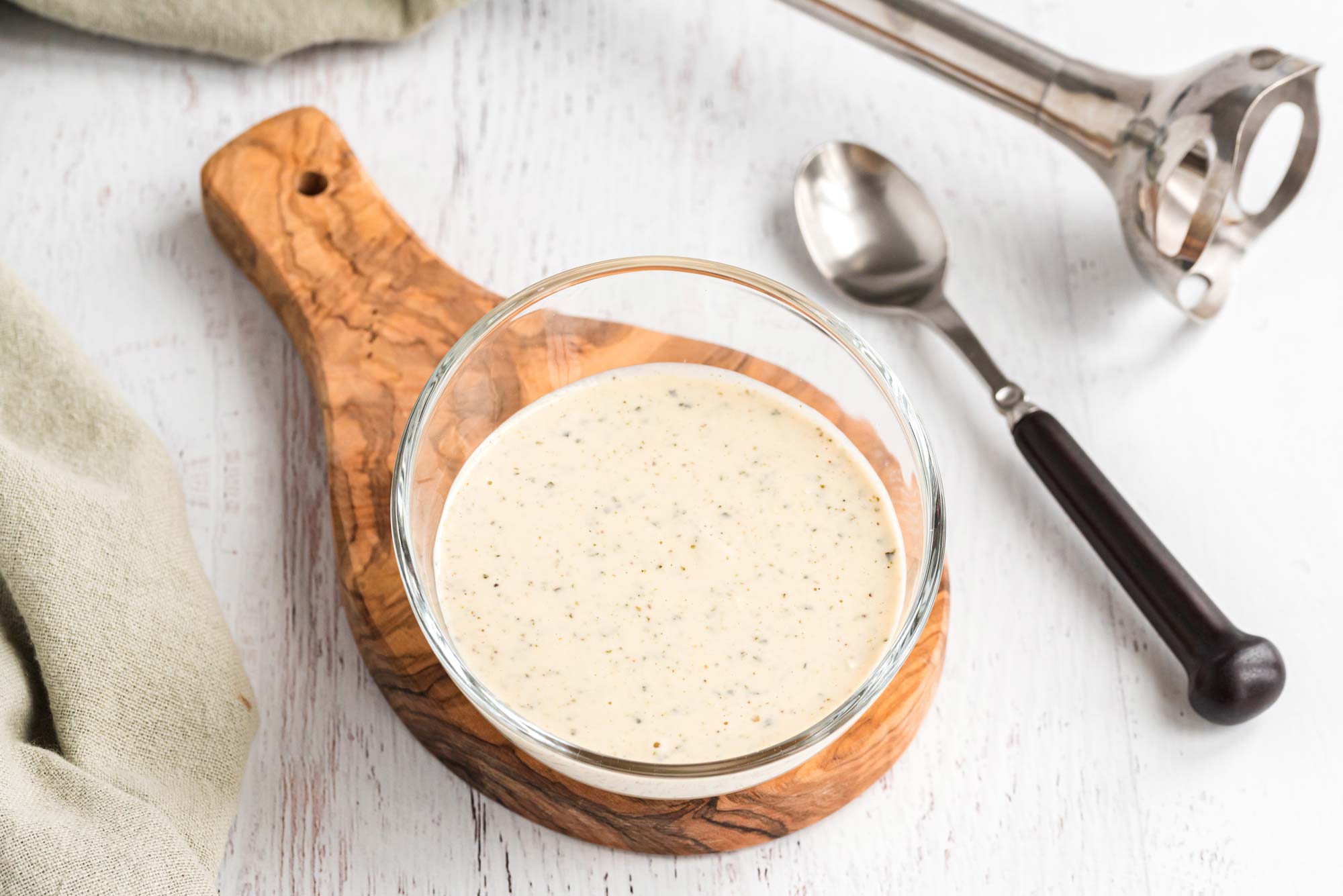
Make a double batch of this dressing and keep it in the refrigerator to use during the week on fresh salads, in sprouted grain bowls, on top of raw tacos, and more. Our favorite way to enjoy it is gently massaged into kale leaves, then topped with avocado, radish, and red onion. Talk about a plant-powered, nutrient-dense sensation!
5. Pickled Carrots and Cauliflower
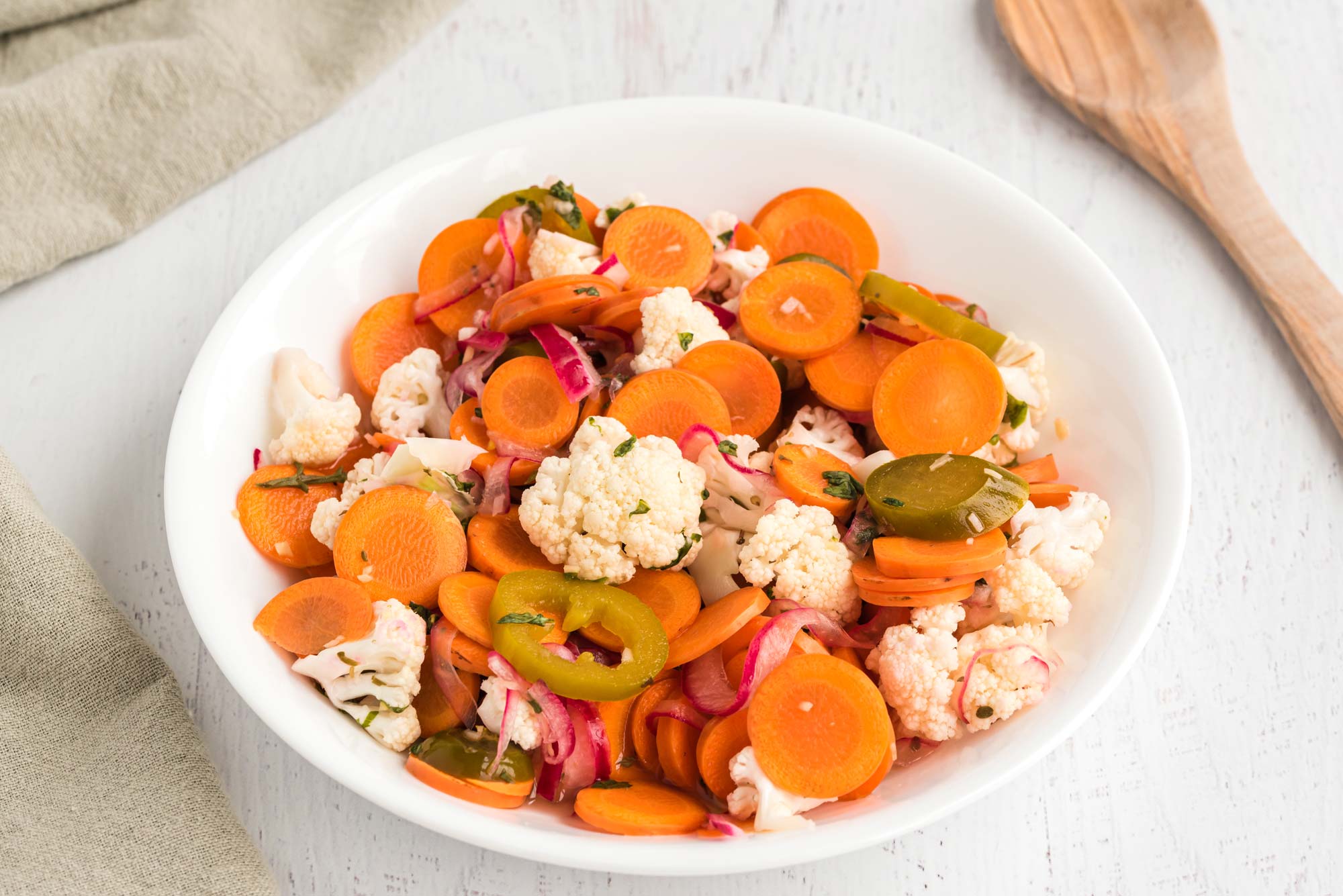
When you marinate vegetables with an acid, a little salt, and optional sweetness, you create a pickled version of that vegetable. A few benefits of pickling — it’s super easy and takes minutes to prepare; you can use just about any type of vegetable to pickle; you’ll have a tasty condiment ready to add to a variety of meals; and, there’s no cooking required! The result is a versatile, tasty, and crunchy treat that you can enjoy throughout the week.
6. Rawesome Nut Dip
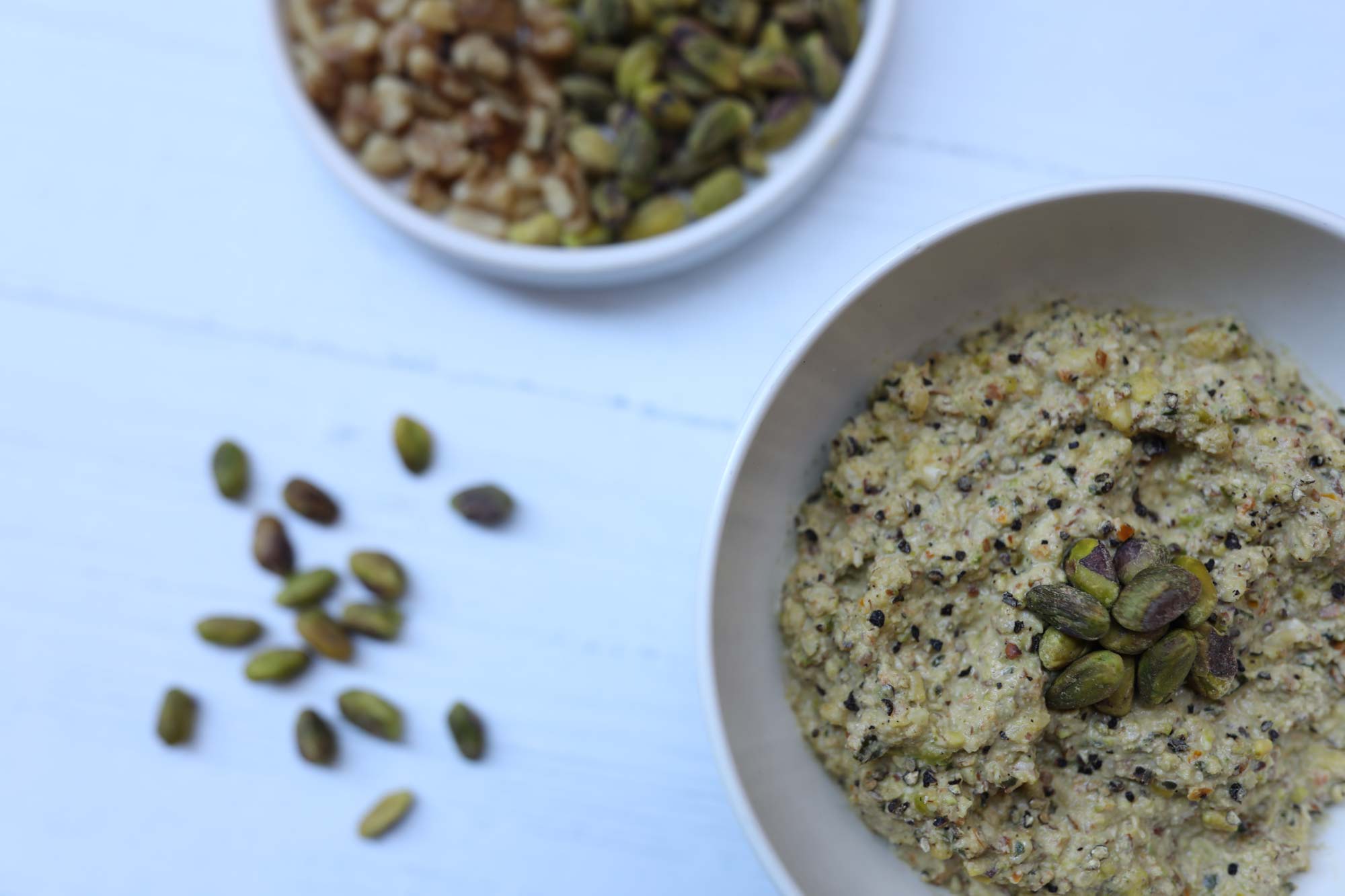
This dip is so flavorful and versatile! Use it as a spread for collard green wraps, as a dip for vegetables, or as a sauce on top of a sprouted grain bowl (just add a bit more water to thin it out). Whichever way you choose to enjoy it, you’ll be packing plenty of plant-based protein, fiber, vitamins, and minerals into each and every bite.
7. Raw Strawberry Pie
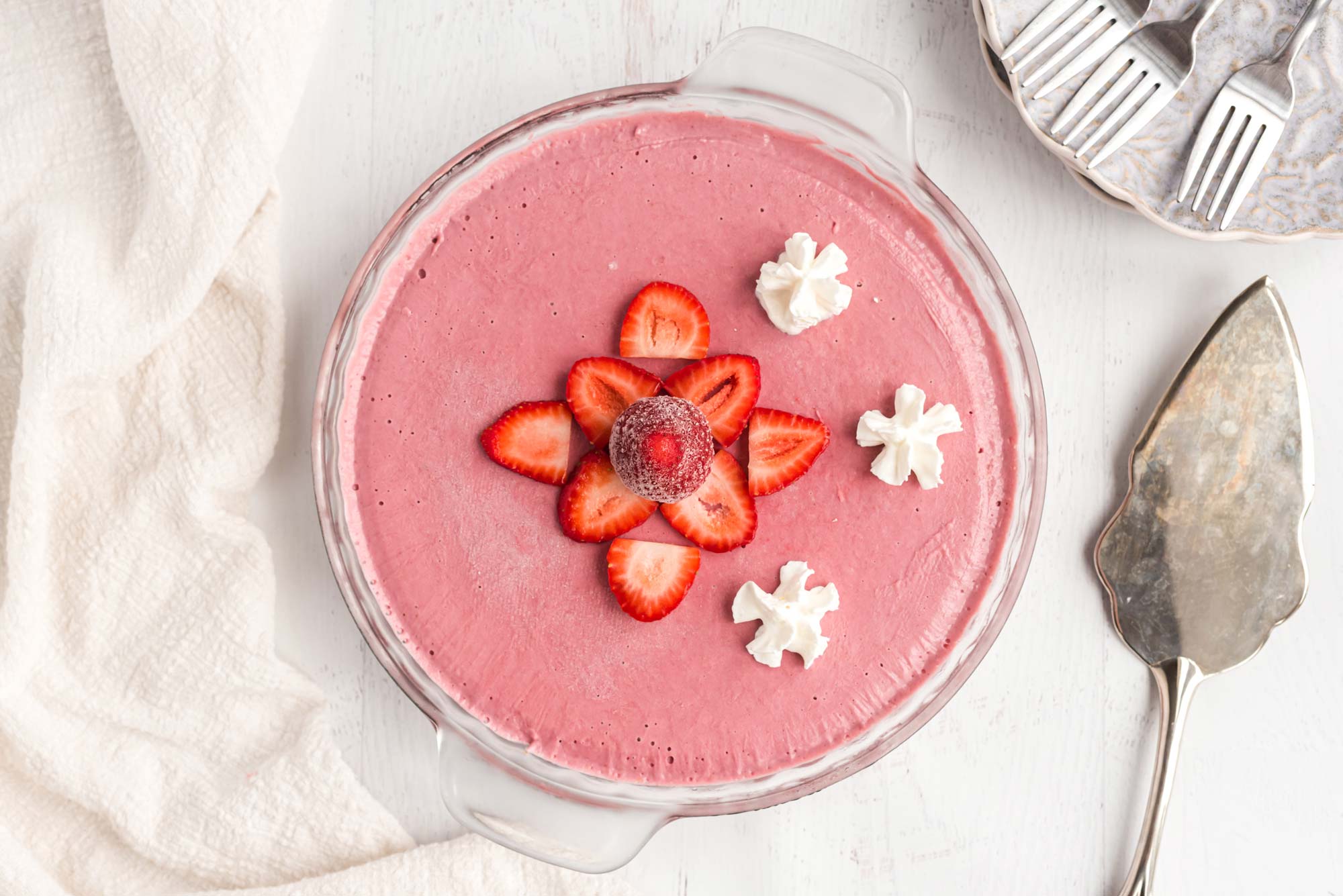
Strawberries contain vitamin C, potassium, manganese, and fiber. While nuts are full of healthy fats, magnesium, plant-based protein, and zinc. That means that this raw “dessert” is actually a deceptively healthy treat.
The Raw Truth on Raw Foods

You don’t have to become a raw vegan or “raw foodist” to enjoy the health benefits of eating uncooked or lightly processed plant foods. You can add more delicious raw foods to your life, and discover tasty and elegant raw dishes that will satisfy your family and wow your friends.







